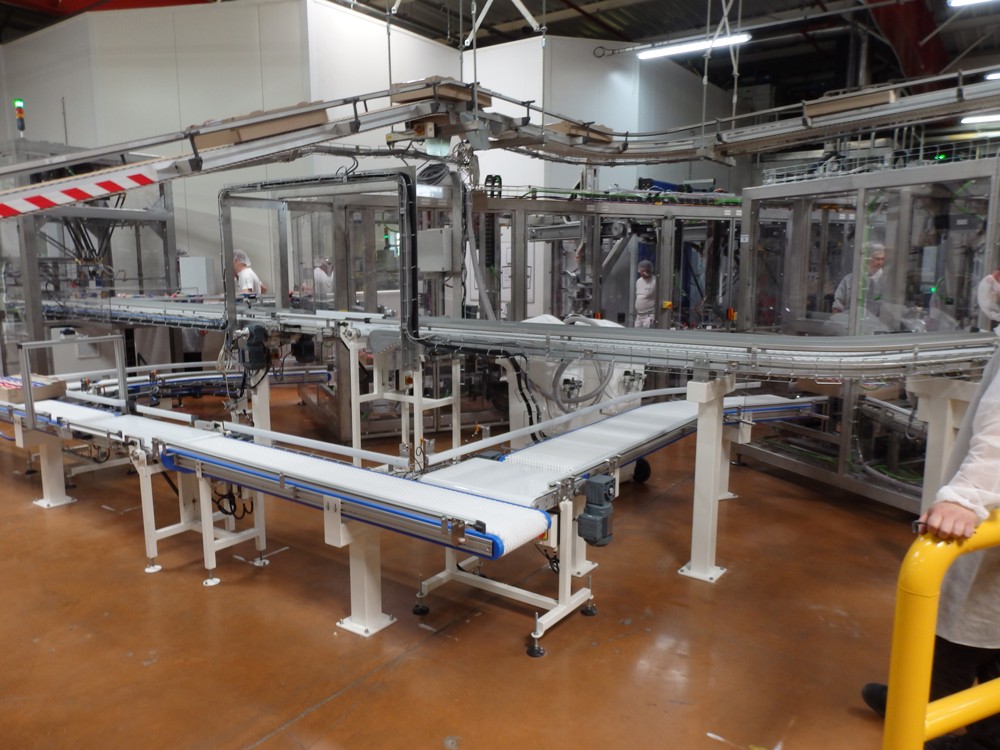Industrial Metal Packaging: Strength and Sturdiness in Every Style
Wiki Article
Effective Industrial Recycling Solutions for Sustainable Product Packaging: A Comprehensive Overview
That's where this comprehensive overview on effective industrial recycling services for sustainable product packaging comes in. By checking out essential areas such as packaging product selection, designing for recyclability, applying recycling facilities, collaborating with reusing partners, and monitoring and determining recycling success, this overview will outfit you with the understanding and tools essential to make enlightened decisions and drive favorable change within your company. Whether you're a packaging specialist, sustainability manager, or merely interested in the topic, this guide will certainly supply beneficial insights and techniques to assist you browse the globe of lasting product packaging.Product Packaging Material Selection
The choice of product packaging materials plays a vital duty in guaranteeing the sustainability of commercial reusing remedies. When it concerns sustainable packaging, the choice of materials is key in lessening ecological influence and making best use of reusing performance. Picking the best products can aid reduce waste generation, preserve resources, and advertise a circular economic climate.One crucial aspect to think about in packaging product selection is recyclability - processing company. Products that can be conveniently recycled and included back into the production cycle are chosen. As an example, materials like cardboard, paper, glass, and certain sorts of plastics can be reused numerous times without losing their high quality. On the other hand, materials that are difficult to reuse, such as non-recyclable compounds or mixed plastics, can produce obstacles for the recycling procedure and might end up in land fills or incinerators.
One more factor to consider is making use of biodegradable and sustainable materials. Packaging made from sustainable resources, such as plant-based plastics or biopolymers, can help in reducing reliance on nonrenewable fuel sources and alleviate climate change. Additionally, naturally degradable products damage down normally with time, reducing the buildup of waste in land fills.
Moreover, the weight and volume of product packaging products must be decreased to lower transportation costs and energy intake. Lightweight materials not only require fewer resources during production yet likewise add to decrease carbon discharges during transportation.
Creating for Recyclability
In order to guarantee the recyclability of packaging products, thoughtful design is necessary. Creating for recyclability entails developing packaging that can be easily arranged, divided, and processed in recycling facilities. One essential aspect of developing for recyclability is the choice of materials. Product packaging designers should prioritize the usage of materials that are extensively approved for reusing and have actually developed recycling infrastructures. Materials such as glass, light weight aluminum, and particular kinds of plastic, like pet dog and HDPE, are commonly recycled and ought to be favored over products that are hard or pricey to recycle.An additional critical factor to consider in making for recyclability is the elimination of unnecessary parts or materials. By lessening the number of layers, coverings, and additional parts, packaging can be made easier and much easier to recycle. In addition, developers ought to intend to reduce making use of mixed products, as they can make complex the reusing process.

Implementing Recycling Framework
Reliable implementation of reusing facilities is crucial for the success of industrial reusing remedies. Without correct framework in position, the reusing process ends up being inefficient and inefficient, hindering the total objective of lasting product packaging.To execute reusing infrastructure successfully, numerous essential aspects need to be thought about. There should be an efficient collection system that assists in the splitting up and collection of recyclable materials. This can include marked recycling containers in public rooms, in addition to collaborations with waste administration business for curbside pick-up and sorting.
When gathered, the recyclable materials need to be moved to recycling centers in a prompt manner. This requires reliable logistics and transportation networks, ensuring that the materials reach the ideal centers immediately.
At the recycling facilities, advanced sorting and handling innovations should remain in place to separate different kinds of products successfully. This consists of the use of automated arranging equipments, optical scanners, and hand-operated sorting methods.
Moreover, there must be a durable market demand for recycled products. This can be achieved with partnerships with manufacturers and sectors that make use of recycled products in their production processes. Developing a steady market for recycled products incentivizes the reusing industry and advertises the round economy.
Working Together With Recycling Allies

One trick facet of collaborating with reusing companions is the facility of clear interaction networks. It is necessary to develop open lines of communication to help with the exchange of info, updates, and feedback. This allows both celebrations to stay informed concerning the progress of reusing initiatives and address any type of challenges or issues that might occur.
Furthermore, cooperation can involve joint efforts in implementing and developing reusing programs. Reusing companions can offer valuable understandings and assistance in creating reliable collection systems and identifying one of the most proper recycling innovations. By functioning together, organizations and reusing partners can enhance the reusing procedure and minimize waste.
In addition, collaboration can extend past the functional elements of reusing. It can likewise incorporate campaigning for and education and learning initiatives. By joining forces, services and reusing companions can elevate awareness regarding the importance of recycling and promote the adoption of lasting packaging practices amongst consumers and various other stakeholders.
Monitoring and Measuring Recycling Success
To guarantee the effectiveness of commercial reusing remedies and the achievement of sustainable packaging goals, it is crucial for services and their reusing companions to develop a detailed system for monitoring and determining recycling success (bulk container recycling). Determining and tracking reusing success permits companies to assess the influence of their recycling initiatives, recognize areas for improvement, and set meaningful targets for future progressOne way to track reusing success is via making use of data collection and evaluation devices. By collecting data on the amount of packaging waste created, the percentage of waste that is reused, and the sorts of products being reused, services can obtain important understandings right into their recycling performance. This information can then be analyzed to recognize trends, patterns, and areas of inefficiency.
Another essential facet of monitoring and gauging reusing success is establishing clear and official source standardized metrics. This permits organizations to compare their efficiency against industry benchmarks and track their progression with time. Metrics such as reusing rates, waste diversion prices, and greenhouse gas emissions can give a quantitative procedure of a business's recycling success.

Verdict
To conclude, carrying out efficient industrial recycling remedies for sustainable product packaging calls for mindful factor to consider of product packaging material option, designing for recyclability, carrying out reusing infrastructure, teaming up with reusing partners, and tracking and gauging recycling success. By integrating these practices, organizations can add to a much more environmentally-friendly and lasting method to packaging, lowering waste and promoting the round economy.By exploring key areas such as product packaging material choice, creating for recyclability, carrying out reusing facilities, collaborating with reusing companions, and monitoring and measuring reusing success, this overview will certainly equip you with the knowledge and tools necessary to make enlightened decisions and drive positive change within your organization. Product packaging designers ought to prioritize the use of materials that are widely accepted for reusing and have actually established reusing frameworks.Cooperation with reusing partners is important for the successful execution of industrial reusing services and the success of lasting packaging objectives. By joining forces, services and reusing companions can elevate understanding regarding the relevance of reusing and advertise the fostering of sustainable product packaging methods among consumers and other stakeholders.
By accumulating information on the quantity of product packaging waste generated, the percentage of waste that is recycled, and the types of materials being reused, services can obtain important understandings into their recycling efficiency.
Report this wiki page